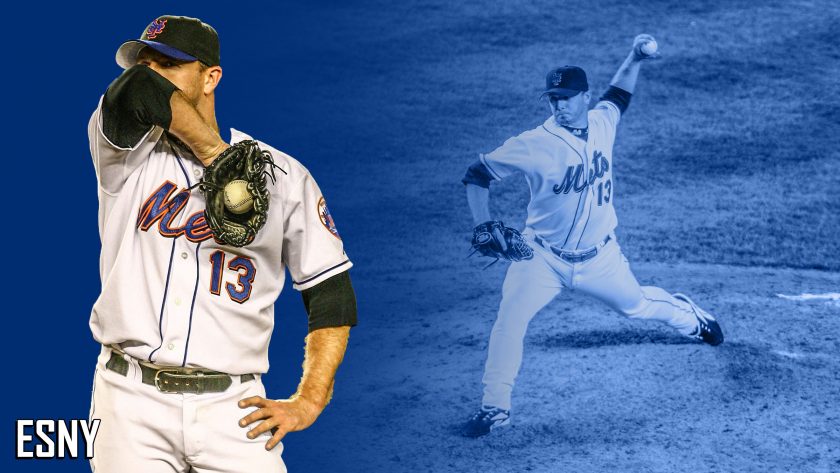Former New York Mets closer Billy Wagner belongs in the Hall of Fame

Former New York Mets closer and the other guy who entered as sandman, Billy Wagner, belongs in the Baseball Hall of Fame.
Before it releases the results of its Hall of Fame voting next month, the Baseball Writers’ Association of America should ask itself a simple question: If the second-best closer of all time can’t be easily inducted on the first ballot, let alone languish around 20 percent support in his fifth year of candidacy, what’s the point of having a Baseball Hall of Fame at all?
I ask because it’s not a hypothetical situation. Entering his fifth year of Hall of Fame eligibility, Wagner is almost certain not to be inducted. According to the Hall of Fame Ballot Tracker, Wagner has been named on only 24.3% of public ballots so far. If Wagner is ever going to be a Hall of Famer, it won’t be this year.
It’s a shame. Billy Wagner is one of the greatest relievers of all time.
He’s undeniably the second-best of the last 30 years. Other than Mariano Rivera, no one else is remotely close. There are all sorts of debates about how generational differences in reliever usage should figure into evaluating contemporary closers, but even the least charitable interpretation of Wagner’s career shows a pitcher whose equals can be counted on one hand.
Among relievers with at least 800 career innings pitched since 1900, Wagner’s 2.31 E.R.A. is second only to Rivera’s 2.21. Wagner’s career 11.92 strikeouts per nine innings is the best of all time. His WHIP, an even 1.00, is tied first with Rivera. Wagner’s career 187 ERA+ ranks second, again only behind Rivera.
Beyond the raw statistics, Wagner was also remarkably consistent. He had one bad season, 2000, in which he suffered a torn flexor tendon and put up a 6.18 E.R.A.. In the other 15 years of his career, his E.R.A. never rose above 2.85. In four separate seasons, Wagner made more than 65 appearances and pitched to an E.R.A. under 2.00.
He even went out on top. In the final season of his career, Wagner, at age 38, made 71 appearances for the Braves, earned 37 saves, and put up a 1.43 E.R.A., the best of his career. 38 years old, Wagner struck out 13.5 batters per nine innings and pitched to a 275 ERA+ — then, happy and healthy, he retired to spend time with his family and coach high school baseball.
And Wagner’s history is all the more compelling. As Jay Jaffe reported in Sports: Illustrated in 2017, Wagner learned to throw in a way that might be unique. His parents’ marriage fell apart repeatedly; “poverty was a constant;” food was sometimes scarce. Then, in the midst of all this strife:
“While playing football at age seven, a friend fell on Wagner’s right (throwing) arm and broke it; six weeks later, just after the cast was removed, he broke it again. During this time, Wagner learned to throw lefthanded, turning his baseball glove inside out and channeling his anger at his instability and grim surroundings into throwing a ball at the side of his maternal grandparents’ house, doing it so hard that pieces of aluminum siding fell off.”
The kid who grew up in poverty and threw lefthanded because he broke his right arm, who was only 5-foot-10, went on to put up the best strikeout rate of all time. It’s a story that belongs in Cooperstown.
So why isn’t Wagner in the Hall? For a few reasons.
The main argument against him is that compared to other Hall-of-Fame relievers, Wagner didn’t pitch all that much. Besides Rivera and Trevor Hoffman, the relievers in the Hall of Fame pitched in a different era, when they often went more than one inning. This lack of innings is one problem; it also leads to fewer chances to compile WAR, another misused strike against his candidacy.
I say misused for a simple reason: the way Wagner’s managers used him wasn’t his fault. For better or worse, this is the era of the one-inning closer. Billy Wagner didn’t choose the era; he just pitched in it. He was a player, not a manager, and he performed the role his managers placed him in better than almost anyone ever did.
[sc name=”LFGM T-Shirt” ]Even Jaffe, whose JAWS Hall-of-Fame measurement system is based on WAR, concedes that Wagner should be measured differently. “At the moment, I wouldn’t bump a JAWS-approved candidate off my ballot to make room for him,” he writes. “But I’m not ready to dismiss the possibility that Wagner merits a spot, as his dominance in so many categories is difficult to ignore.”
Wagner’s E.R.A. and ERA+ are second only to Mariano Rivera among relievers since 1900. He struck out opposing hitters more frequently than anyone. He came from almost nothing to become one of the greatest closers of all time.
So, I’ll ask again. If the second-best closer of all time isn’t a Hall of Famer, what’s the point of having a Hall of Fame at all?
I have followed New York sports passionately for almost my entire life, since I went to Shea Stadium in 2004 and saw Jae Seo lose 8-1 to the Pirates. At journalism school, I once missed covering a Land Use Committee meeting to write about Jacob deGrom's last start of the year.






